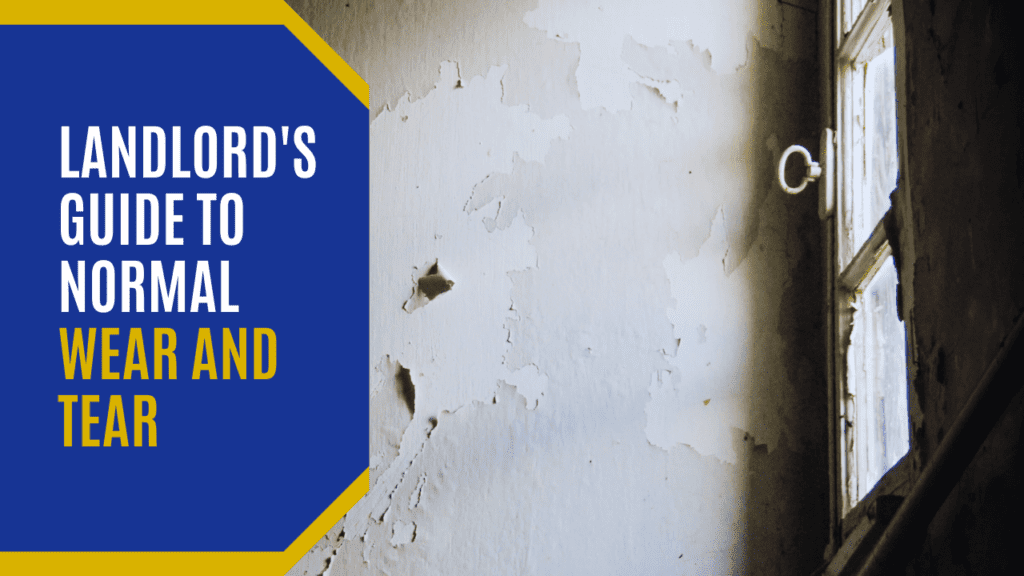
How do you know if you’re looking at tenant damage or normal wear and tear?
This is not an uncommon conundrum at the end of a lease term when your tenant has moved out and you’re conducting your move-out inspection. You’ll have to decide what you’ll be paying for yourself during the turnover process and what you’ll be charging your tenant’s security deposit to repair or replace.
This requires an understanding of what qualifies as wear and tear (your responsibility) and what qualifies as damage (your tenant’s responsibility).
Guide to Identifying Wear and Tear
You’ll have 21 days to return the security deposit once your tenants move out. If you’re planning to withhold all or part of that deposit, Washington State’s Residential Landlord-Tenant Act requires you to provide the tenants with a “full and specific” statement explaining why.
Wear and tear is what occurs in the normal use of a home. There isn’t a definition more specific than that in state laws. Sometimes, this causes confusion.
Here are some general examples of what normal wear and tear looks like:
- Nail holes, chips, smudges, dents, scrapes, scuffs, or cracks in the walls. Any evidence that a tenant hung a picture or rested furniture against the wall is normal wear and tear.
- Faded paint or slightly torn, faded wallpaper. Walls will age and deteriorate with use.
- Faded or worn carpet areas or scuffed wood floors, especially in high-traffic areas.
- Doors that stick or cabinet doors that become warped over time.
- Mold from problems with water or ventilation.
- Loose or chipped grout in tiles.
- Faded, scratched, or worn enamel in tubs, toilets, and sinks.
- Appliances that are aging and inefficient.
These are things that you’ll need to fix up as part of your turnover process. You cannot expect a tenant who has lived in your property for two years to pay to replace a 20-year-old dishwasher.
Guide to Identifying Tenant Damage and How to Hold Tenants Accountable
As a rental property owner, you’re prepared to pay for those turnover costs and preventative maintenance items. You’ll invest in getting the property ready for a new tenant.
But, you should not have to pay for the damage that occurs due to a tenant’s neglect or misuse of your property. Sometimes, tenant damage is unintentional. An accident might happen and a window will break. Maybe a child will flush something down the toilet and cause a plumbing issue. Those are accidents, but they’re still the responsibility of the departing tenant.
Some examples of property damage include:
- Appliances that don’t work because they were improperly used. Maybe someone stepped on an open dishwasher door or a shelf in a refrigerator is cracked.
- Large holes in the wall that go beyond small nail holes.
- Unapproved changes to the property, such as paint colors, murals, or stick-on flooring.
- Tears, holes, or large stains in the carpet.
- Wood floors that are deeply scratched or chipped.
- Broken doors or windows.
- Missing or cracked bathroom tiles.
- Broken or cracked mirrors.
Be careful charging the security deposit for these damages. You want to make sure you can prove in court that the tenant damaged your property. Document the condition of your property before move-in and after move-out. You should not deduct anything from the security deposit unless you can prove the damage.
Recently, state bills have been introduced that aim to define normal wear and tear more clearly and to protect tenants from what they believe are excessive security deposit charges. None of those bills have passed yet, but we’re following potential legislation carefully.
 This is not an area in which you want to make a mistake. If you’re struggling to decide whether you’re looking at wear and tear or property damage in a rental property, contact us at Real Estate Gladiators. We work with investors in Monroe, Issaquah, Bellevue, Everett, Lake Stevens, Kirkland and other cities in and around King and Snohomish counties in Washington State.
This is not an area in which you want to make a mistake. If you’re struggling to decide whether you’re looking at wear and tear or property damage in a rental property, contact us at Real Estate Gladiators. We work with investors in Monroe, Issaquah, Bellevue, Everett, Lake Stevens, Kirkland and other cities in and around King and Snohomish counties in Washington State.
